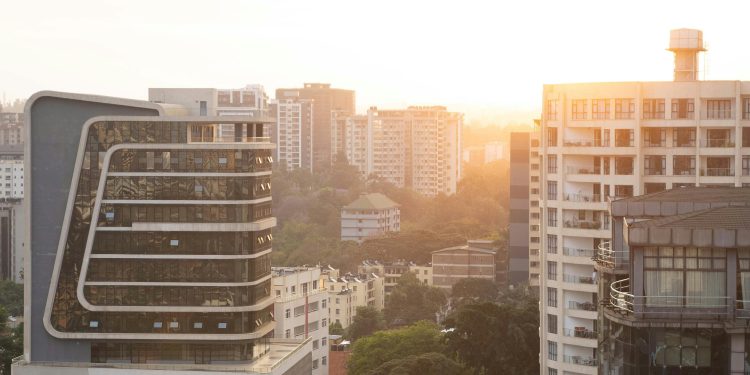Kenya’s real estate market has consistently demonstrated its potential, driven by rapid urbanization, infrastructural developments, and a steadily growing middle class.
The potential in Kenya transforms property hotspots, with certain regions emerging as gold mines for investors looking to capitalize on this dynamic market.
In 2025, Kenya offers a range of real estate opportunities, From the major city to serene coastal retreats, the country’s property landscape has something for every investment profile. Here’s your guide to the top real estate investment locations in Kenya, where growth, opportunity, and return on investment come together.
In this article
1. Nairobi Metropolitan Area
Nairobi has always been the focal point of Kenya’s economic activity, but with rising demand and limited land in the city center, the spotlight has shifted to its metropolitan area. Key suburbs are experiencing remarkable growth, thanks to enhanced road networks and proximity to Nairobi’s CBD.
Westlands and Kilimani: Known for high end commercial and residential developments, Westlands and Kilimani remain prime investment hubs. With a growing number of office spaces, shopping centers, and luxury apartments, these areas attract both business professionals and high-net-worth individuals.
Ruaka and Ruiru: These areas have benefited significantly from new infrastructure, such as the Northern Bypass and Thika Road. Ruaka, in particular, has witnessed a boom in apartment complexes and gated communities aimed at middle-income earners. Ruiru, slightly further from the city, also offers excellent opportunities in affordable housing developments, catering to Nairobi’s growing population of young professionals and families.
Athi River and Kitengela: These towns have become affordable alternatives to Nairobi for both residential and commercial real estate. With industrial areas and educational institutions located nearby, Athi River and Kitengela are ideal for rental apartments, hostels, and affordable housing projects.
According to Cytonn Investments, suburban areas around Nairobi have recorded a 20% year-on-year growth in property values. Infrastructure projects planned for 2025 will likely sustain this upward trend, presenting an excellent opportunity for real estate investors.
2. Nanyuki
Nanyuki, located at the base of Mount Kenya, has been gaining popularity for its scenic landscapes and blend of urban and rural charm. Known for luxury lodges and resorts, Nanyuki attracts tourists, expats, and Kenyans looking for a serene lifestyle close to nature.
Holiday Homes and Eco-Tourism Lodges: Demand for vacation homes in Nanyuki has surged, with investors purchasing land to build eco-friendly lodges and holiday homes. These properties are ideal for short-term rentals, catering to tourists seeking an alternative to traditional hotels.
Residential Developments: Nanyuki’s appeal as a retirement destination has grown, with many retirees choosing this location for its tranquility. For real estate investors, Nanyuki offers opportunities in residential developments, catering to long-term tenants and short-term vacationers alike.
A recent report by HassConsult highlights Nanyuki’s 15% annual property growth rate over the last five years, driven by eco-tourism and an influx of holidaymakers.
3. Mombasa and the Coastal Region
Kenya’s coastal region, including Mombasa, Diani, Kilifi, and Malindi, has long been a favorite for local and international investors. This region appeals to tourists and high net worth individuals alike, combining leisure, luxury, and culture.
- Diani Beach: Known for its pristine beaches and luxury resorts, Diani is ideal for vacation rentals and holiday homes. Investors are purchasing beachfront villas and apartments, capitalizing on Kenya’s growing domestic and international tourism.
- Mombasa: Kenya’s second largest city offers investment opportunities in hospitality, commercial real estate, and middle-income housing. With Mombasa’s role as a key trade and tourism center, the demand for commercial spaces and rental housing is expected to remain steady.
- Kilifi and Malindi: These coastal towns attract luxury real estate investments from high-net-worth individuals. Improved road infrastructure has made Kilifi and Malindi more accessible, boosting demand for vacation homes and retirement properties.
Knight Frank’s latest report indicates that coastal properties offer rental yields as high as 8% annually. With the tourism sector expected to thrive, 2025 may see a surge in demand for high-end and mid-range coastal properties.
4.Nakuru
Nakuru’s transformation into a major city in Kenya has been impressive. Located along the Nairobi-Nakuru highway, this city has become a popular commuter town and a focal point for business and investment in the Rift Valley.
- Residential Developments: Nakuru’s middle-class population has fueled demand for residential properties, including gated communities and apartments. Investors targeting young professionals and families can benefit from Nakuru’s growing rental market.
- Commercial Real Estate: As more businesses establish themselves in Nakuru, the need for retail and office spaces has increased. Investors have opportunities to develop commercial properties catering to the city’s expanding business community.
World Bank research has ranked Nakuru among the fastest-growing cities in East Africa, with steady demand for residential and commercial properties. As infrastructure projects continue, Nakuru will remain an attractive real estate market in 2025.
5. Eldoret
Eldoret, the fifth largest town in Kenya, is rapidly becoming a key investment destination. Located on the Northern Corridor, Eldoret offers accessibility to regional markets, attracting diverse investments in both residential and agricultural real estate.
- Residential Market: Eldoret’s rising population, combined with its universities and healthcare facilities, makes it an ideal market for rental properties. Investors can target students, young professionals, and families.
- Agricultural Real Estate: Surrounded by fertile land, Eldoret is popular for agricultural investments. Real estate investors looking to venture into agriculture can benefit from this region’s potential for cash crops like maize, wheat, and horticulture.
A recent JLL report identified Eldoret as a promising investment zone, especially for affordable housing and agricultural projects. Investors interested in diverse real estate portfolios should consider Eldoret’s unique mix of opportunities.
Conclusion
The real estate investment landscape in Kenya is brimming with potential, and 2025 presents a golden opportunity for investors seeking strong returns. Nairobi’s suburbs, Nanyuki, Mombasa, Nakuru, and Eldoret each offer unique advantages, from rental income and vacation homes to commercial and agricultural investments.
As Kenya’s economy continues to grow, these regions are set to become thriving investment hubs, with each providing substantial opportunities for both local and international investors.




